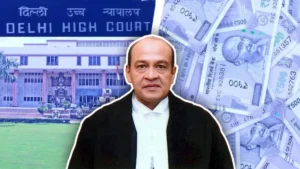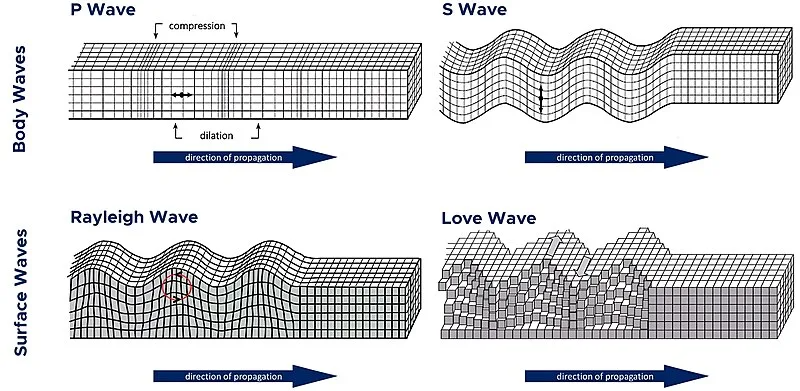July 23rd Current Affairs

Operation Sindoor
July 21st Current Affairs Home / Operation Sindoor Why in News? Parliament’s Monsoon Session, starting July 21, 2025, is expected to feature

Alaska Earthquakes
July 21st Current Affairs Home / Alaska Earthquakes Why in News? On July 21, 2025, Alaska Peninsula was struck by

August 2, 2027 Solar Eclipse
July 21st Current Affairs Home / August 2, 2027 Solar Eclipse Why in News? A total solar eclipse is set

India’s milestone in clean energy transition
July 21st Current Affairs Home / India’s milestone in clean energy transition Why in News? India achieved a milestone by

‘Baby Grok’, child-friendly AI app
July 21st Current Affairs Home / ‘Baby Grok’, Child-friendly AI app Why in News? Elon Musk’s AI company xAI has announced

Impeachment proceedings against Justice Yashwant Verma
July 22nd Current Affairs Home / Impeachment proceedings against Justice Yashwant Verma Context On July 22, 2025, impeachment proceedings against
Eviction in Assam and the resulting concerns in Nagaland

Context
The Nagaland government has issued an alert to all Deputy Commissioners to maintain heightened vigilance along its border with Assam. This follows Assam’s eviction drives in Golaghat district aimed at clearing alleged encroachments on forest land. The concern is that displaced persons, whom the Nagaland administration labels “illegal immigrants,” may attempt to cross over. The situation is rooted in the region’s complex demographic, ethnic, and legal landscape.
History of the Issue
- The Assam-Nagaland border has long been sensitive due to land disputes, migration, and ethnic tensions.
- Eviction drives in Assam are not new; they have escalated since 2021, often involving people living on forest or government land without proper documentation.
- These drives affect migrant settlers, especially those from socio-economically weaker sections.
- Nagaland, under the Inner Line Permit (ILP) system, has stricter entry norms, leading to fears of demographic change and resource pressure due to the entry of displaced people.
Reasons for the Current Tensions
- Evictions in Assam: Target alleged encroachers, often from Central Assam, said to be cultivating betel nut in forest areas.
- Border Proximity: Uriamghat in Assam borders Wokha district in Nagaland, increasing the risk of spillover migration.
- Demographic Anxiety: Nagaland fears a shift in its ethnic composition.
- Law and Order Concerns: Movement of evicted individuals could trigger social unrest, resource conflicts, or communal tension.
Constitutional Provisions
- Article 19(1)(d) & (e): Grants Indian citizens the right to move freely and reside anywhere in India.
- Exceptions under Article 19(5) allow restrictions for protecting tribal interests, especially in Fifth and Sixth Schedule areas.
- Nagaland enjoys special protection under Article 371A, giving it autonomy in matters of customary law, land ownership, and religious practices.
Legal Provisions
- Inner Line Permit (ILP) under the Bengal Eastern Frontier Regulation, 1873: Required for non-residents to enter Nagaland, Mizoram, and Arunachal Pradesh.
- Forest (Conservation) Act, 1980: Encroachment on forest land is prohibited.
- Assam Land and Revenue Regulation, 1886: Used by the Assam government to reclaim land.
Role of Stakeholders
- Assam Government: Conducting eviction drives to reclaim forest land and reduce illegal encroachment.
- Nagaland Government: Ensuring demographic stability and public order through preventive measures.
- District Administrations: Enforcing surveillance and entry protocols.
- Centre (MHA): Coordinates inter-state border security and ILP regime.
- Civil Society & Media: Raise humanitarian concerns regarding displaced populations.
Definition of Technical Terms
- Eviction Drive: Government-led operation to remove illegal settlers from public or forest lands.
- Illegal Immigrant: A person residing in a region without legal or government-sanctioned permission (can apply to foreign nationals or Indians in ILP areas).
- Inner Line Permit (ILP): A special travel document required to enter certain northeastern states, even for Indian citizens.
Impacts
On India:
- Inter-state tensions: Risk of administrative and ethnic clashes.
- Humanitarian Concerns: Displacement without rehabilitation plans creates vulnerabilities.
- Legal ambiguities: Conflict between citizens’ mobility rights and state-specific laws like ILP.
On Neighbouring Countries:
- Illegal immigration from Bangladesh historically complicates regional demography and border policies in Assam and Nagaland.
Way Forward
- Clear Rehabilitation Policy: For evicted families, especially citizens, to prevent internal distress migration.
- Inter-State Coordination: Assam and Nagaland must form a joint mechanism for managing cross-border movement and disputes.
- Reform ILP Mechanism: To ensure balance between national integration and state-specific identity protection.
- Community Engagement: Build local trust to prevent ethnic stereotyping and communal tensions.
- Transparent Verification: Use Aadhaar, land records, and biometric ID to differentiate between Indian citizens and foreign immigrants.
Prelims MCQ
Q. Consider the following statements:
- The Inner Line Permit (ILP) is applicable to both Indian citizens and foreign nationals in the same way.
- Article 371A provides Nagaland with special legislative powers over customary laws and land ownership.
Which of the above statements is/are correct?
A. 1 only
B. 2 only
C. Both 1 and 2
D. Neither 1 nor 2
Answer:
Statement 1 is incorrect.
- The Inner Line Permit (ILP) is a special permit required only for Indian citizens to enter certain protected areas, particularly in some northeastern states (like Arunachal Pradesh, Mizoram, Nagaland, and Manipur).
- Foreign nationals require a Protected Area Permit (PAP) or Restricted Area Permit (RAP), which is a separate system governed under different rules.
- Therefore, ILP is not applicable in the same way to both Indian citizens and foreign nationals.
Statement 2 is correct.
- Article 371A of the Indian Constitution provides that no Act of Parliament shall apply to the state of Nagaland in respect to:
- Religious or social practices of the Nagas,
- Naga customary law and procedure,
- Administration of civil and criminal justice involving decisions according to Naga customary law,
- Ownership and transfer of land and its resources,
- Unless the Nagaland Legislative Assembly decides to adopt such laws.
Correct Answer: B. 2 only
Mains Question
Q. Discuss the constitutional and legal challenges arising from internal displacement due to eviction drives in India. In light of recent tensions between Assam and Nagaland, evaluate the effectiveness of inter-state coordination mechanisms in managing such situations. (250 words)




